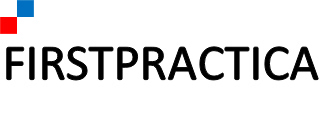This article reviews the strategies to monetize open software, product differentiation and the evolving open source business models in the era of cloud..
As an introduction, let’s consider what exposing and sharing source code entails..
Producing and distributing open source software
Software represents a piece of intellectual property. It has a creator, and terms and conditions under which the work can be used and redistributed. Traditional proprietary software belongs exclusively to its owner: code and trademark.
Open source software, on the other hand, follows a variety of licenses which differ from proprietary licenses. Some of the main ways open source is unique:
- Source code is accessible and visible to all. Initially, many feared it would render open source software less secure, more vulnerable. But it turned out to be untrue: precisely because anyone can spot a vulnerability, more eyes on code tends to have a strengthening effect, rather than fragilizing.
- Each license defines redistribution rights, depending if the downstream work is commercial or non-commercial, how the work can be redistributed, modified, and what credits need to be explicitly attributed to the author.
Some claim that open source is not as much a business model as it is a production and distribution model. Who writes the code? Who tests it? Who makes it spread and promotes its adoption? These questions relate directly to open source as a production and distribution model. The business model is a related topic, but distinct in essence.
Free as in gratis, free as in freedom
Many languages distinguish the notion of freedom with that of not paying. But in English, you are free to do something, and you can give something for free. This leads to confusion, especially as open source deals with these two topics.
The objectives of a zero price and the freedom to share include the creation of value for users, and a return on investment for a business choosing this license.
How to monetize open source software in the era of Cloud Computing
Service providers
In theory, the creator of software would be the natural choice for the initial monetizer of open source. But when the first mainstream open source product, Linux, came to be, those who made money from it were in the services business. Some provided training. Others, technical support, or professional services (installation, configuration, performance tuning, software integration).
Software creators
The creators of open source software followed the service providers, becoming hybrid businesses: engineers on staff produced free software, while the rest of the company sold services around it. Companies which owned the original rights to their software released it on a dual license. The dual license allowed selling a commercial license to users looking to embed the software into a proprietary stack, distributing it without any virality from the popular GPL license, while also releasing an open source version for other use cases.
As of the beginning of the 2020’s, cloud deployment models are radically changing how open source software companies can monetize their products. Open source licenses were created before the era of the cloud, when software was distributed as a package, downloaded and installed on premise. Licenses like the GPL ensured symmetry of relationships: if the user of open source software made no money, the creator made no money from this deployment. If the user sold the combined product, the creator would be able to sell a commercial license, for example in the case of dual licensing. Now in the cloud, software becomes a service, and in order to be sustainable, licenses need to evolve, as well as free vs. paid differentiation models.
Cloud and hosting providers
Cloud vendors thrive on open source software, as they benefit from zero cost intellectual property to install on their servers and package for their users, at a profit. In the long term, they will need to create incentives for open source developers to continue releasing new works.
An experienced consultant in open source business models
We have helped the most innovative open source companies grow their product adoption and accelerate their revenue stream through product differentiation and the creation of ecosystems. Use the contact form to discuss an initial conversation with a consultant about your open source strategy.
Further readings
Free white paper, Freemium: Attributes of an Emerging Business Model
Book: The Mind Share Market

Leave a Reply